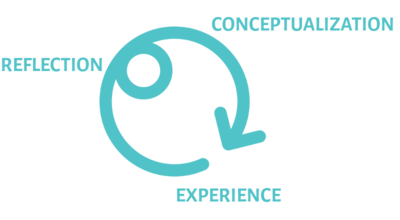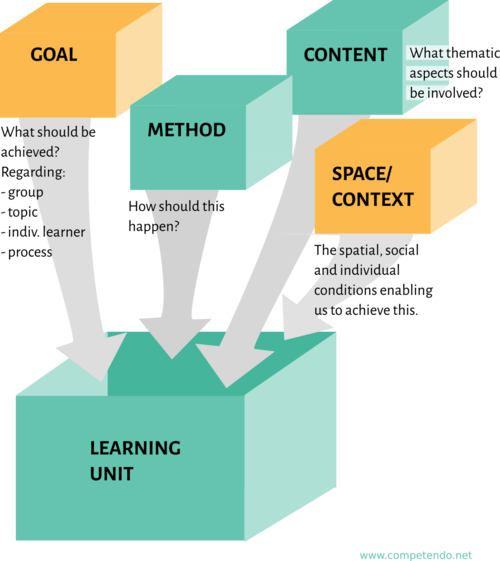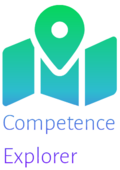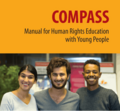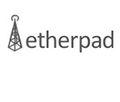|
|
| (107 intermediate revisions by 2 users not shown) |
| Line 1: |
Line 1: |
| | __NOTOC__ | | __NOTOC__ |
| − | [[File:Created-by.png | 20px | Created By ]] [[User:Nils.zimmermann | nez]]
| + | <div class="methodpage-content"> |
| − | <div class="left-column-contentinner"> | + | <div class=teaser-text><div style="background: #eee; float: left; padding: 0px 5px 0px 5px; margin-right: 5px;"><i class="fas fa-arrow-left"> </i> [[Before]]</div> [[File:CompetendoPlanning.png | right | 200px|link=Planning]]You, your institution or school, and your participants have different preferences and expectations regarding the common learning process. Planning is the art of developing a plan for structured and goal-oriented learning, considering the diverse expectations and needs of stakeholders, activating the qualities in a group, and ensuring that all of its parts gain from the common process. </div> |
| − | <div class=teaser-text>[[File:CompetendoPlanning.png | right | 200px]]You, your institution or school and your participants have different preferences and expectations regarding the common learning process. Planning is the art of developing a plan for structured and goal-oriented learning, considering the diverse expectations and needs of stakeholders, activating the qualities in a group, and ensuring that all of its parts gain from the common process in the agreed way. </div> | |
| | <hr> | | <hr> |
| − | [[File:Learningprocess.png]] | + | <div class=left-box> |
| | + | ===Elements of a Learning Process=== |
| | + | A learning process consists of the standard elements described in detail in the [[During]] section. No matter if it lasts several days, several hours, or only one hour, the '''working conditions''' need to be clarified and created, or learners need to be enabled to '''involve their qualities, curiosity and expertise'''. |
| | + | |
| | + | At several stages of a longer process they also need opportunities to '''reflection''' on their needs, questions and experiences, and also [[ Evaluation |to assess their learning]] during the process (formative evaluation). |
| | + | |
| | + | A final evaluation focuses on the learning outcome, its relevance for their future and on the evaluation of the learning process they were involved in. Finally, learners and facilitators need to '''describe learning outcome or competence development'''. |
| | + | |
| | + | </div> |
| | + | |
| | <hr> | | <hr> |
| − | A learning process is consisting on the standard elements described in detail in the [[During]] section. No matter if it's lasting several days, some hours, or only one hour, the working conditions need to be clarified, or learners need to be enabled to involve their qualities, curiosity and expertise.
| |
| − |
| |
| − | At several stages of a longer process they need as well opportunities to reflect on their questions, or assess their learning. Similar, at the end of the process a final reflection should take place, now more focusing on the learning outcome, its relevance for their future and on the evaluation of the learning process they were into. Finally the learning outcome or competency development needs to be documented and described (by learners and facilitators).
| |
| | | | |
| | <hr class=boldline> | | <hr class=boldline> |
| | | | |
| − | ==The Four Process Dynamics in a Workshop or Training== | + | ==Process Dynamics that Influence the Learning Experience== |
| − | Planning a workshop or seminar means taking into account different process dynamics. The learning as an activity is curricular, the group dynamics is evolving, the topical concept is structured, creative thinking requires methodological alternation. | + | Planning a workshop or seminar means taking into account different structuring logics. These complement each other in places, but sometimes they also contradict each other. The learning as an activity is curricular, the group dynamics is evolving during the process. A topical concept is promoting a logical structure. Creative thinking requires methodological alternation. A way must be found to integrate these logics appropriately. |
| − | | |
| − | <div class="mw-collapsible mw-collapsed" data-expandtext="Read more">
| |
| | | | |
| − | ===#1 Curricular Nature of Learning=== | + | <div class=left-box> |
| | + | ===#1 Nonlinear and curricular Nature of Learning=== |
| | + | <div class="mw-collapsible mw-collapsed" data-expandtext="+ Read more" data-collapsetext="- Collapse"> |
| | [[File:Learning-cycle.png | 400px | center]] | | [[File:Learning-cycle.png | 400px | center]] |
| − | The first is the curricular nature of learning as a [[Circular Learning Model | circle between experience, reflection and conceptualization]], Therefore, a process needs to foresee place for regular experience and regular reflection/assessment. In this picture the red stripes symbolize such regular self-observation and reasoning phases. | + | The first is the curricular nature of learning in a nonlinear process - [[Non-linear Process | between experience, reflection and conceptualization]]. A process needs to foresee place for regular experience and regular reflection/assessment/reasoning. |
| | + | </div> |
| | | | |
| − | <hr class=simpleline> | + | </div> |
| | + | <div class=left-box> |
| | | | |
| | ===#2 Divergence and Convergence=== | | ===#2 Divergence and Convergence=== |
| | + | <div class="mw-collapsible mw-collapsed" data-expandtext="+ Read more" data-collapsetext="- Collapse"> |
| | + | |
| | [[File:Divergentconvergent.png | 350px | center]] | | [[File:Divergentconvergent.png | 350px | center]] |
| | | | |
| − | Second, a learning process is oscillating between [[Divergent and Convergent Thinking | two opposite ways of thinking]]. Divergent thinking is opening the mind toward different impulses, it is rather open-ended and explorative. Convergent thinking is narrowing our thinking, it's logical and directed toward a conclusion or result. The interplay between divergence and convergence is characterizing the whole process and as well explaining the dynamics in smaller units on a micro-level. One approach to satisfy dimensions is to [[Method Mix | mix and alternate methodology]]. | + | Second, a learning process is oscillating between [[Divergent and Convergent Thinking | two opposite ways of thinking]]. Divergent thinking opens the mind to different impulses - rather open-ended and explorative. Convergent thinking is narrowing our thinking. It's logical and directed toward a conclusion or result. The interplay between divergence and convergence characterizes the whole process and also explains the dynamics in smaller units on a micro-level. One approach to satisfy dimensions is to [[Method Mix | mix and alternate methodology]]. |
| | + | </div> |
| | + | </div> |
| | + | <div class=left-box> |
| | | | |
| − | <hr class=simpleline>
| |
| | ===#3 Content Order=== | | ===#3 Content Order=== |
| | + | <div class="mw-collapsible mw-collapsed" data-expandtext="+ Read more" data-collapsetext="- Collapse"> |
| | + | |
| | [[File:Content-train.png | 500px | center]] | | [[File:Content-train.png | 500px | center]] |
| − | Third, the order of the topical aspects of a learning event is shaping the process often in a linear way. The topical string is often the only clear described program aspect, in example in a program schedule: Like the key aspects of a day, of a part of a day, or of an unit. | + | Third, the order of the topical aspects of a learning event shapes the process, often in a linear way. The topical string is often the only clearly-described program aspect. For example, in a program schedule this includes key aspects of a day, of a part of a day, or of a unit. |
| | + | </div> |
| | | | |
| − | <hr class=simpleline> | + | </div> |
| | + | <div class=left-box> |
| | | | |
| | ===#4 Group Dynamics=== | | ===#4 Group Dynamics=== |
| | + | <div class="mw-collapsible mw-collapsed" data-expandtext="+ Read more" data-collapsetext="- Collapse"> |
| | + | |
| | [[File:Teamuhr.gif | center]] | | [[File:Teamuhr.gif | center]] |
| − | Fourth, the group dynamics needs to be taken into consideration. In particular, when a group is starting together, the [[Model of group development | phases of group development]] claim their space from group formation to storming, then norming toward finding into a performing mode. In order to achieve this, consider the idea of [[Cooperative Learning]], team building measures at the beginning and recognize, that probably higher group performance will be possible during the later steps of a process. | + | Fourth, the group dynamics need to be taken into consideration. In particular, when a group is starting together, the [[Model of group development | phases of group development]] claim their space from group formation to storming, then norming toward finding into a performing mode. In order to achieve this, consider the idea of [[Cooperative Learning]], team building measures at the beginning and recognize, that probably higher group performance will be possible during the later steps of a process. |
| | + | </div> |
| | + | |
| | </div> | | </div> |
| | + | <div class=left-box> |
| | + | ===#5 Competence development=== |
| | + | <div class="mw-collapsible mw-collapsed" data-expandtext="+ Read more" data-collapsetext="- Collapse"> |
| | + | [[File: C-e-p.png | 500px | center]] |
| | + | Competence-oriented learning processes address equally the three dimensions cognition, emotion and practice (or head, heart and hand). At the end the workshop, lecture or longer educational programme should support the participants' acquisition of competences. Check: |
| | | | |
| − |
| + | * Do the planned elements address the most relevant specific (sub) competences - knowledge, attitudes, values, skills? |
| − | <hr class=boldline>
| + | * Were the three dimensions addressed in a balanced way? |
| | + | * Does this plan support self-development and offer enough opportunities to participation and co-creation? |
| | | | |
| − | ==Articles, Checklists and Methods==
| + | </div> |
| − | <div class="mw-collapsible mw-expanded" data-expandtext="Read more"> | |
| | | | |
| − | <div class=teaser-box>
| |
| | | | |
| − | === [[Planning goal, topic, method]]===
| |
| − | [[File:Article.png | left ]] This is a proposal for a planning method of a workshop with the goal-content-method matrix. It helps a facilitator create a clear logical structure of the learning sessions. One gains more efficiency, transparency and flexibility when making this distinction between (absolute prior) goals and the methods we use on the way to achieve these goals.
| |
| | </div> | | </div> |
| | | | |
| − | <div class=teaser-box>
| |
| | | | |
| − | ===[[Five fingers–five fields of needs]]=== | + | <hr class=boldline> |
| − | [[File:Article.png | left ]]Imagine your participants’ needs are represented by a hand with five fingers. Each finger stands for a different type of need: 1. Social, 2. Physical, 3. Intellectual, 4.Emotional and 5. Spiritual. In your seminar there should be a space for covering all five needs. | + | |
| | + | ==Unit Planning == |
| | + | Planning a learning unit or a whole workshop is trying to satisfy diverse expectations. In example, there is the content of learning, a learner group has needs and is underlying a certain dynamic, or one has to make a choice regarding the methodology, how to facilitate the process. In detail these are questions such as: |
| | + | <div class="mw-collapsible mw-expanded" data-expandtext="more"> |
| | + | |
| | + | |
| | + | [[File:Goal-content-method-space.png | 500px | center]] |
| | </div> | | </div> |
| | | | |
| − | <div class="teaser-box"> | + | |
| − | ===[[Checklist: Five fields of needs]]=== | + | <hr class=boldline> |
| − | [[File:Check.png | left]]The checklist will help you to analyze your plan if its fitting contentwise and methodologically to the diverse needs of your participants.
| + | |
| | + | ==Why Goals First?== |
| | + | The goals have priority in planning and content, topics, methods should fit into the goals. We explain, why it makes sense to plan by prioritizing goals and learning to give them priority: |
| | + | <div class="mw-collapsible mw-collapsed" data-expandtext="more"> |
| | + | |
| | + | <div class=left-box> |
| | + | ===Gaining Clarity=== |
| | + | Goals help you to think about what you want to achieve and where you currently are in the process. |
| | + | |
| | + | The disadvantage of thinking in methods, not in goals, is that you might not necessarily be able to describe the deeper meaning behind the unit you are teaching. |
| | + | ===Being Transparent=== |
| | + | Goals help you inform your participants about what you want to achieve and what is going happen. |
| | + | |
| | + | Otherwise you have to offer them an explanation along the lines of: “We're playing a game – you'll understand later on.” This is not transparent. |
| | + | ===Setting Criteria for Assessment/Evaluation=== |
| | + | Goals establish your criteria for success. You will need them for further planning and for evaluation. |
| | + | |
| | + | If you do not know what you want to achieve, then it is difficult to measure success. |
| | + | |
| | + | ===Gaining More Flexibility for Participatory Interaction=== |
| | + | Clear goals make you flexible and free to negotiate with your participants. They help you decide quickly whether the process is moving in the right direction or, you should stop or change. |
| | + | |
| | + | When you have to change quickly, you can act more spontaneously and have more freedom to negotiate with your participants if you keep the "big picture" in |
| | + | mind. |
| | + | </div> |
| | </div> | | </div> |
| | | | |
| − | <div class="teaser-box">
| |
| | | | |
| − | ===[[Five fingers-expectations]]=== | + | <hr class=boldline> |
| − | [[File:Method.png | left ]]Facilitating a conversation on expectations of participants and facilitators toward a common learning event, giving the human needs place. | + | |
| | + | ==Tool: Planning Matrix== |
| | + | A planning matrix focuses on the goals of your activity, is flexible enough to include spontaneous innovations, and reflects the participants’ needs and those of the facilitators. We recommend planning a meeting using such a goal-content-method table, which should cover all relevant information. |
| | + | <div class="mw-collapsible mw-collapsed" data-expandtext="more"> |
| | + | |
| | + | ===Define the general purpose of the meeting=== |
| | + | First, describe the general issue you are dealing with in the meeting and how it is related to the general, fundamental goals of your activity. Before filling out the matrix define one general goal for the meeting with a maximum of 5 sub-goals. This reduction will help you to gain clarity. |
| | + | |
| | + | * These or similar methods could help: [[Organise, sort and weight]] or [[Decision cake]] |
| | + | |
| | + | Check also the competences you aim to adress by your training or workshop. Different competence frameworks could serve as a source of inspiration here. |
| | + | <div class=left-box> |
| | + | [[File: Competence-explorer.png | link= Competence Explorer | right | 120px]] |
| | + | |
| | + | ===Competence Frameworks as a Source of Inspiration=== |
| | + | * A tool for an overview of different competence frameworks: [[Competence Explorer]] |
| | + | * [https://www.etf.europa.eu/en/what-we-do/scaffold-card-game-revolutionise-teaching Scaffold Card Game] by European Training Foundation |
| | + | * [[Card Game: Competences for Democratic Culture| Card Game: Competences for a Democratic Culture]] |
| | </div> | | </div> |
| | | | |
| | + | ===Divide the programme in smaller timeslots (units)=== |
| | + | Define the time necessary for each unit. Try to be realistic. Include breaks (which should be considered as necessary informal group, reflection or recreation time). |
| | + | |
| | + | <table> |
| | + | <tr> |
| | + | <td> |
| | + | |
| | + | </td> |
| | + | <td> |
| | + | Example:<br>'''9:00-­10:30''' |
| | + | </td> |
| | + | <td> |
| | + | '''11:00-­12:30''' |
| | + | </td> |
| | + | <td> |
| | + | '''Lunch break''' |
| | + | </td> |
| | + | <td> |
| | + | '''14:00-­15:15''' |
| | + | </td> |
| | + | </tr> |
| | + | |
| | + | |
| | + | <tr> |
| | + | <td> |
| | + | |
| | + | ===1. Goals=== |
| | + | Go into details . Plan different units or didactical steps for the meeting and define their goals. Formulate the goals from the perspective of your participants, using the past tense. |
| | + | |
| | + | ''“The participants have learned/experienced/done...”'' |
| | + | </td> |
| | + | <td> |
| | + | Sub-unit A (9:00-9:45) |
| | + | *Participants have learned each other's names. |
| | + | *They got a first impression of the group. |
| | + | *They know one another in terms of the topic at hand. |
| | + | |
| | + | --- |
| | + | |
| | + | Sub-unit B (9:45-10:30) |
| | + | |
| | + | ... |
| | + | |
| | + | </td> |
| | + | <td> |
| | + | </td> |
| | + | <td> |
| | + | </td> |
| | + | <td> |
| | + | </td> |
| | | | |
| − | <div class=teaser-box> | + | </tr> |
| − | ===[[Dynamic Agenda]]=== | + | <tr> |
| − | [[File:Method.png | left]]Planning a meeting agenda in a participatory way means to allow the facilitators and a group to re-arrange, cancel, or add sessions or topics. Present the agenda as a frame with time slots filled with removable moderation cards.
| + | <td> |
| | + | |
| | + | ===2. Content=== |
| | + | Identify the relevant content. |
| | + | |
| | + | ''Which aspects of the content are important? What knowledge is relevant?'' |
| | + | <td> |
| | + | Sub-unit A (9:00-9:45) |
| | + | |
| | + | '''Active icebreaking''' |
| | + | |
| | + | Possible Questions: |
| | + | *Names |
| | + | *How much do you know about topic X? |
| | + | *Interests... |
| | + | |
| | + | --- |
| | + | |
| | + | Sub-unit B (9:45-10:30) |
| | + | |
| | + | ... |
| | + | </td> |
| | + | <td> |
| | + | </td> |
| | + | <td> |
| | + | </td> |
| | + | <td> |
| | + | </td> |
| | + | |
| | + | </tr> |
| | + | |
| | + | <tr> |
| | + | <td> |
| | + | |
| | + | ===3. Method=== |
| | + | Choose a method: |
| | + | Methods have to correspond to their goals. While you choose from among several possibilities for how to teach a topic, you can ask: Which of the methods is best suited to achieve my goals? |
| | + | |
| | + | ''How will I achieve the goal and address the topical aspects?'' |
| | + | </td> |
| | + | <td> |
| | + | Sub-unit A (9:00-9:45) |
| | + | |
| | + | '''Shoe game''' |
| | + | *Each participants takes off one shoe and throws it into the middle; |
| | + | *Each participant then takes a shoe out of the “pile of shoes,” finds the owner, and they talk in pairs. |
| | + | |
| | + | '''Sociometric line-up''' |
| | + | *Participants form a line according to their answers to these questions x, y, z... |
| | + | |
| | + | --- |
| | + | |
| | + | Sub-unit B (9:45-10:30) |
| | + | |
| | + | ... |
| | + | </td> |
| | + | <td> |
| | + | </td> |
| | + | <td> |
| | + | </td> |
| | + | <td> |
| | + | </td> |
| | + | |
| | + | </tr> |
| | + | |
| | + | <tr> |
| | + | <td> |
| | + | |
| | + | ===4. Who?=== |
| | + | A larger team can include one facilitator and a supporting co-facilitator. If you are running a meeting as a team, it makes sense to agree on goals, while the |
| | + | facilitator responsible for the unit decides on content and methods. |
| | + | |
| | + | ''Who plans, moderates or guides participants through the step(s)?'' |
| | + | <td> |
| | + | Sub-unit A (9:00-9:45) |
| | + | * Petra, Pawel |
| | + | |
| | + | --- |
| | + | |
| | + | Sub-unit B (9:45-10:30) |
| | + | * |
| | + | </td> |
| | + | <td> |
| | + | </td> |
| | + | <td> |
| | + | </td> |
| | + | <td> |
| | + | </td> |
| | + | |
| | + | </tr> |
| | + | |
| | + | <tr> |
| | + | <td> |
| | + | |
| | + | ===5. Material and remarks=== |
| | + | You can also add the necessary material and organizational remarks to the table. This can be helpful during preparation. |
| | + | |
| | + | ''What materials, preparation or specific requirements are needed?'' |
| | + | <td> |
| | + | Sub-unit A (9:00-9:45) |
| | + | *Requires sufficient space. |
| | + | *Mark +/- on the floor for orientation |
| | + | |
| | + | --- |
| | + | |
| | + | Sub-unit B (9:45-10:30) |
| | + | |
| | + | </td> |
| | + | <td> |
| | + | </td> |
| | + | <td> |
| | + | </td> |
| | + | <td> |
| | + | </td> |
| | + | |
| | + | </tr> |
| | + | <tr> |
| | + | <td> |
| | + | ===6. Check: Addressed Competences=== |
| | + | ''What (sub)competence - knowledge, skills, attitudes, values- is addressed in here?'' |
| | + | |
| | + | Check: [[Competence Explorer]] |
| | + | <td> |
| | + | Sub-unit A (9:00-9:45) |
| | + | *Communication, collaboration in diverse groups |
| | + | --- |
| | + | |
| | + | Sub-unit B (9:45-10:30) |
| | + | |
| | + | </td> |
| | + | <td> |
| | + | </td> |
| | + | <td> |
| | + | </td> |
| | + | <td> |
| | + | </td> |
| | + | |
| | + | </tr> |
| | + | </table> |
| | </div> | | </div> |
| − | <div class=teaser-box>
| |
| | | | |
| − | === [[Planning with Key Competencies]]===
| |
| − | [[File:Article.png | left ]]The Case Study shows, how organizing a small local project can lead to the development of skills, competencies and knowledge in the organizers and the target group. Including a template for your training.
| |
| | | | |
| − | </div> | + | <hr class=boldline> |
| | + | |
| | + | ==Flexibility: Between Goals and the Process== |
| | + | Striking a healthy balance between a goal-oriented and process-oriented approach is what makes a holistic learning experience complete, and reflects the values of holistic understanding. This means that we always have to be aware that changing plans might be necessary, and that you cannot completely stick to the seminar schedule you created beforehand. |
| | + | <div class="mw-collapsible mw-collapsed" data-expandtext="more"> |
| | + | When we agree on regular adjustments of our plans and learning goals, this implies that we have to discuss plans and goals with our participants transparently. In this sense, we encourage them to: |
| | + | |
| | + | * Share tasks |
| | + | * Decide together about changes in subjects, methods, or agendas |
| | + | * Negotiate conflicting goals |
| | + | * Ask themselves how we can ensure that plans have enough flexibility and yet also enough structure? |
| | | | |
| − | <div class=teaser-box> | + | <div class=left-box > |
| | + | ===Possibilities for changing plans during an event=== |
| | | | |
| − | === [[Key Competency Profile]]===
| + | * Regular assessment in the facilitators' team: Having regular team meetings on the evening of the event |
| − | [[File:Method.png | left ]] Key Competencies are abilities learners might use in a broad range of social contexts - in social participation, as employees, in their way to express their culture or for their personal development. This task helps teams and organizations to identify their key competency profile including the competencies learners, visitors or participants might learn during their activities.
| + | * Morning sessions: discussing program and goals with participants |
| | + | * Encouraging participants’ reflection, e.g. regular reflection rounds without or with the facilitators, including methods for formative self-assessment |
| | + | * Offering an anonymous feedback box and checking it before every daily programme |
| | + | * Inviting participants to influence the process during the event and showing your willingness to do it: e.g. speeding up some parts if participants already have knowledge of it, taking breaks when participants say they need it, letting participants facilitate parts of a session, etc. |
| | </div> | | </div> |
| | | | |
| − | <div class=teaser-box> | + | However, the condition for adjustments is reflection grounding on evidence gained by assessment - in a formative assessment/evaluation approach during the whole process. |
| | + | <div class=left-box > |
| | + | ====Read more:==== |
| | + | * [[Evaluation]] |
| | + | </div> |
| | | | |
| − | === [[Method Mix]]===
| + | At the beginning, it might make us feel insecure to give up control, but experience shows that it actually strengthens participants’ sense of responsibility for the process and their identification with the seminar content. |
| − | [[File:Article.png | left ]]Learning styles are different and when using merthods, that address different senses or ways of expression we may have a bigger impact on our participants, so that everybody feels attracted, although not everybody from the same methods. Therefore we advocate for a mix of activity/cognition, creativity/traditional learning, groupwork/individual work...</div>
| |
| − | <div class=teaser-box>
| |
| − | ===[[Checklist: Preparation of an International Meeting]]===
| |
| − | [[File:Check.png | left]]A short checklist for the beginning of your planning
| |
| | </div> | | </div> |
| | | | |
| | | | |
| − | <div class="teaser-box">
| |
| | | | |
| − | ===[[Diversity-Aware Language and Material]]===
| |
| − | [[File:Article.png | left ]]Using language is using power. Sharing power and empowering participants linguistical implies to reflect the language and materials you use and to apply it in a diversity-aware way.
| |
| − | </div>
| |
| − | <div class="teaser-box">
| |
| | | | |
| − | ===[[Checklist: Diversity and Language]]=== | + | <hr class=boldline> |
| − | [[File:check.png | left ]]It's not enough to say something, it is as well important, how you say it. In a call for application, in working texts in reports or promotion texts for public audiences we represent our values, and culture - as well as our stereotypes, presumptions or limitations. Therefore we want to motivate you, to use language precisely.
| |
| − | </div>
| |
| | | | |
| | <div class=teaser-box> | | <div class=teaser-box> |
| − | ===[[Empathy Map]]=== | + | |
| − | [[File:Method.png | left]]Find out more about your target group. The method will help listen, empathize, and make careful observations.
| + | ===Resources: Handbooks=== |
| | + | <i class="fas fa-book" style="font-size: 54px; color: #ccc; float:right;"></i> |
| | + | |
| | + | <noinclude>{{:Resources - Facilitation general}}</noinclude> |
| | </div> | | </div> |
| | + | |
| | + | <hr class=boldline> |
| | | | |
| | <div class=teaser-box> | | <div class=teaser-box> |
| − | ===[[Designing a persona]]=== | + | |
| − | [[File:Method.png | left]] A persona may represent a typical person affected by an initiative, or the initiative's target audience or group. Imagine a concrete person, with a name, habits, and clothing. Try to understand them as deeply as possible. Try to think like them, take a "walk in their shoes'". Developing these personas are the first step in helping real people and reflecting critically on our assumptions.
| + | ===Resources: Planning and organizing=== |
| | + | |
| | + | <div class=right-box> |
| | + | <i class="fas fa-check" style="font-size: 36px; color: #ccc; float:right;"></i> |
| | + | ====Quality and criteria==== |
| | + | <noinclude>{{:Material: Organizing and planning}}</noinclude> |
| | + | <i class="fas fa-users" style="font-size: 36px; color: #ccc; float:right;"></i> |
| | + | |
| | + | ====Apps and Tools: Creating Texts Together, Collaborating==== |
| | + | <noinclude>{{:Apps-collaborative-texts}}</noinclude> |
| | + | |
| | + | <div style="font-size: 36px; color: #ccc; float:right; font-weight: bold">EU</div> |
| | + | ====Erasmus + and EU: Useful Links==== |
| | + | <noinclude>{{:Apps-Erasmus-plus}}</noinclude> |
| | + | |
| | + | </div> |
| | </div> | | </div> |
| | | | |
| − | <div class="teaser-box">
| |
| | | | |
| − | === [[Helping to plan community work]]===
| |
| − | [[File:Article.png | left ]]If we want to encourage the learners to work with and for the communities to initiate the social change, it is good to know the basics of the planning of the community work. Here the characteristics of the phases of planning community work.
| |
| − | </div>
| |
| | | | |
| − | </div> | + | <hr class=boldline> |
| | + | |
| | + | |
| | + | <noinclude>{{:Block: Author Elke Heublein}}</noinclude> |
| | + | <noinclude>{{:Block: Author Nils-Eyk Zimmermann}}</noinclude> |
| | + | <hr class=boldline> |
| | + | <noinclude>{{:Block: Book: Holistic Learning}}</noinclude> |
| | + | |
| | | | |
| − | </div>
| |
| | | | |
| − | <div class="right-column-contentinner">
| |
| − | ===Navigation:===
| |
| − | [[File:back.gif | back to the main section]] [[Before]]
| |
| − | *[[The Facilitation Mindset]]
| |
| − | * [[Planning]]
| |
| − | * [[Organizing]]
| |
| | | | |
| − | <hr style="border:0; border-bottom: 1px dashed #d21e3d; width: 100%;"> | + | </div> |
| | | | |
| | + | <div class="methodpage-infos"> |
| | ===Related:=== | | ===Related:=== |
| | + | *[[Before]] |
| | + | <hr class=simpleline> |
| | + | |
| | + | ===Also interesting:=== |
| | *[[Identification of Learning Outcome]] | | *[[Identification of Learning Outcome]] |
| | *[[During]] | | *[[During]] |


